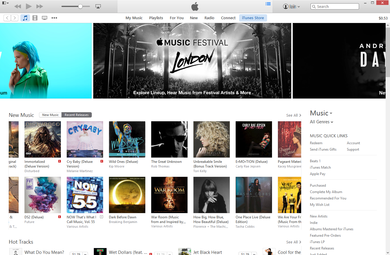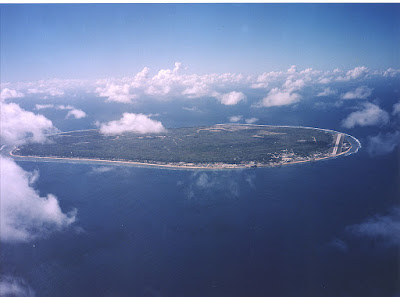The name "Israel"originally referred to the patriarch Jacob, The Book of Genesis tells us he was given the moniker meaning, "one who strives with
God," after he successfully wrestled with the
angel of the Lord. Jacob's twelve sons became the ancestors of the Israelites, also known as the Twelve Tribes of Israel or Children of Israel.
The earliest known
archaeological artifact to mention the word "Israel" is the Merneptah Stele of
ancient Egypt (dated to the late 13th century BC.
In 586 BCE King Nebuchadnezzar II of
Babylon conquered Judah and exiled the Jews to Babylon.
The first Christian writer to mention the term "holy land" was Justin Martyr in his
Dialogue with Trypho (c. 160). Justin was explaining that the land God promised to
Abraham would be inherited by Christians when Christ returned and built a new Jerusalem.
The concept of the return to the Holy Land was first developed in Jewish history during the Babylonian exile in the sixth century BC.
From the early 18th century, German Pietists had promoted the view that the Jews were "God's time-piece" and that the conversion of the "Jewish nation" was key to the evangelization of the world. These ideas found fertile soil in
England, during the early 19th century as British
evangelicals became fascinated with the Jews.
Large-scale immigration to Palestine began in 1882 beginning with the arrival of Jews from Russia. Between 1882 and 1903, approximately 35,000 Jews immigrated to the southwestern area of Syria, then a province of the Ottoman Empire. The majority came from the Russian Empire with a smaller number arriving from Yemen.
Tel Aviv was founded on April 11, 1909 by Jewish immigrants on the outskirts of the ancient port city of Jaffa. It was planned as an independent Hebrew
city with wide streets and boulevards, running water at each house and street lights. It is the second most populous Israeli city after Jerusalem.
 |
| Sarona, Tel Aviv |
The British general Edmund Allenby retook Jerusalem from the Turks in 1917. In the resulting November 2, 1917 Balfour Declaration, (Arthur Balfour being the British Foreign Secretary), Britain pledged itself to use her best endeavors to facilitate in Palestine a national home for the Jewish people.
The United Nations unanimously confirmed in 1922 the Balfour Declaration as a mandate and
Great Britain was temporarily entrusted with administrating Palestine on behalf of its Arab and Jewish inhabitants.
 |
| Portrait of Lord Balfour, along with his famous declaration |
The United Nations General assembly adopted the UN Resolution to divide Western Palestine between the Jews and the Arabs in 1947. The Arabs rejected this plan out of hand refusing to accept an independent Palestinian Jewish state and declaring their intention to "drive the Jews into the sea" once the British Mandatory powers left.
The Jewish state of Israel was proclaimed on May 14, 1948. The day after the British left Palestine, six Arab armies attacked the fledgling nation. Contrary to every expectation the Jews were victorious and threw back the attacking Arab armies.
 |
| Declaration of State of Israel 1948 |
The rebirth of the Jewish state was a unique event in history. Never before has a nation been resurrected two thousand years after being destroyed with its people dispersed and its land occupied by others.
An ardent supporter of Zionism,
Winston Churchill was instrumental in setting up the Jewish homeland and consequently some Jews believed he was the promised Messiah.
Since 1951 in Israel it has been required by the law that every new
building has a security room that can withstand blast and shrapnel from conventional weapons, and offer protection against chemical and
biological weapons.
In 1952
Albert Einstein was offered the Presidency of the State of Israel. He declined, saying that as a scientist trained to deal with objective facts, he lacked the aptitude and experience to deal with people.
In the 1967 Six-Day War Arab armies again attacked Israel but they were repelled to the line of the Jordan River and Israel occupied Judea and Samaria. The Israelis found themselves back in control of the Old City of Jerusalem thus fulfilling the prophecy in Luke 21 v 24 that the "times of the Gentiles" would end.
The 1973 Yom Kippur War began on October 6, 1973 when a coalition of Arab states led by
Egypt and Syria launched a surprise attack, The timing of the attack was significant, as it coincided with the Jewish holiday of Yom Kippur, a day of fasting and prayer. Its also a day when Jews seek forgiveness for their sins and put things right with their neighbors they may have wronged. Israel was caught off guard, and the initial Arab offensive was successful.
Egypt attacked with 3, 000 tanks and 600,000 men. On the Syrian side, Israel could muster only 70 tanks and looked as if they would be flattened. But just as it seemed her soldiers would be overrun, the invading forces inexplicably stopped their advance, allowing Israel time to regather.
Israel quickly rallied and launched a counteroffensive. The Israeli military, aided by divine providence, made significant gains and eventually pushed the Arab forces back to their pre-war positions. The war ended in a ceasefire on October 25, 1973.
Egyptian President Anwar al-Sadat, Israeli Prime Minister Menachem Begin and US President Jimmy Carter signed the Egypt–Israel Peace Treaty in Washington, D.C on March 26, 1979, ending three decades of hostilities.
Israel admitted in 1985 that it has been secretly resettling Ethiopian Jews in Israel since 1977. They had been escaping the
country's communist regime and the recent
famine by being secretly airlifted to Israel. It is claimed Ethiopian Jews are descendants of the tribe of Dan.
In order to rescue the Ethiopian Jews, the Mossad bought and ran a profitable scuba diving resort in Sudan between 1982 and 1984. Between 8,000 and 10,000 of them were safely smuggled to Israel.
Russian is spoken in Israel by about 20% of the total population.
The ethnic Samaritans of
the Bible still exist in modern-day Israel. They number about 820 people and still practice a distinctly ancient form of Judaism.
Israel has almost no fresh water of their own. Only the Sea of Galilee and the Jordan River that comes out of it. They need it from Lebanon, Syria and Jordan.
Israel is the only first world country that has enough
children to replace its own population.
The
glue on Israeli postage stamps is certified kosher.
Source Heart newspaper































